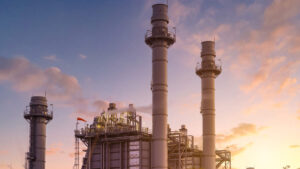Emission Control: Just how viable is Victoria’s move to ban new gas connections?

Cutting the pipe. On new household gas connections in Victoria. Pic: Thanit Weerawan via Getty Images
Victoria is cutting off the gas apron strings – at least for residential uses – by banning gas connections for new homes from 1 January 2024, a measure the state government claims will allow households to save up to $1,000 off their annual energy bills whilst reducing emissions.
It added that the decision will remove the uncertainty around gas supplies that new homeowners would otherwise have faced as gas prices rise.
The state has the highest use of residential gas in Australia, with around 80% of homes connected.
With gas contributing about 17% of its emissions, the move is expected to help Victoria meet its emissions reduction targets of 75% to 80% by 2035 and net zero by 2045.
The move was met with universal approval from the green lobby with Environment Victoria saying the long-term trend was for renewable energy to get cheaper whilst the Property Council of Australia chimed in, saying it provided certainty to the industry while allowing the government to avoid investment in new gas network infrastructure.
Rather predictably, the Australian Pipelines and Gas Association said that if Victoria, which has the highest emission electricity in the country due to its ongoing reliance on brown coal, really wanted to reduce emissions, it should accelerate the replacement of brown coal generators.
It added that getting more “renewable” gases like biomethane and hydrogen into the system would let the state decarbonise now.
Real impact from removal of gas?
So would Victoria’s decision really deliver a noticeable reduction in emissions? The short answer isn’t going to please the environmental lobby, given that it would be not quite as much as they would like.
While looking at new home commencements aren’t exactly the same as new homes built and completed – as the number of uncompleted homes testify – it provides an idea of just how many homes we can expect to see.
According to the Housing Industry Association, total commencements in Victoria during the 2022 financial year reached 46,651 homes.
While this is a substantial number, it pales in comparison to the 2.5 million dwellings recorded in the state during the 2021 Census.
So the number of new homes works out to about 1.87% of the existing homes.
Even assuming that we maintain this level of new building over the next decade of so, that still accounts for maybe 18%-19% of all homes by 2035.
That isn’t a small number by any measure, but it would only make up a small portion of the emissions reduction that the state is looking to achieve.
Which of course isn’t the same thing as saying that Victoria shouldn’t bother. Every little bit counts, we just shouldn’t think this is the magic bullet.
Nor are the comments by the APGA any better.
Even discounting the self interest in wanting more gas connections to be made, greater use of biomethane and hydrogen – presumably green hydrogen – presents its own issues.
The impact of biofuels of all types has been questionable at the best of times.
First generation biofuels, which still make up the vast majority of such fuels, are produced from food crops and hence impact on their availability.
Biofuels produced from non-food biomass are still rare while production of biomethane from waste material in Australia is limited to say the least.
Using hydrogen in existing pipelines is also troublesome as they are subject to hydrogen-embrittlement, which could cause them to rupture, if used for transporting pure hydrogen.
This is also why all uses of hydrogen to date involves blending, or the mixing of a small percentage of hydrogen into the existing natural gas stream.
Enabling the gas pipeline network to handle pure hydrogen would require thousands of kilometres of existing pipeline to be replaced.
And even if we do manage to do so, the rollout of green hydrogen is facing its own challenges.
Subsidising not the way to go
Whilst Australia’s $2bn Hydrogen Headstart scheme, set to start in fiscal 2027, has been touted as a step in the right direction to kick start the hydrogen economy, Climate Energy Finance director Tim Buckley warned that handing out money is not an economical or long-term solution.
“Yes, it is designed to kickstart the industry and get something happening before 2030 but subsidies are time limited, which means they are limited in their effectiveness and nature,” he told Stockhead.
“At the end of the day, the industry is not going to be viable absent those subsidies.
“You ultimately need a price on carbon and effectively, you wouldn’t need taxpayers to subsidise companies doing the right thing – they would do the right thing or pay tax for doing the wrong thing, in this case carbon emissions.”
The Australian government has launched a review of the Hydrogen Headstart program and is seeing feedback from stakeholders on the design of the competitive process to select large scale, Australian-based projects producing renewable hydrogen.
Open for consultation until 3 August, the document outlines the government’s approach to global market signals and paves the way for at least two large-scale projects to receive a production credit over a 10-year period.
But the idea that this $2 billion subsidy is going to get ‘world-scale’ projects up and running is a very optimistic slant, Buckley adds.
“The world is struggling to get projects over 10 megawatts to financial close,” he says.
“The hydrogen bubble well and truly burst two years and in the meantime, we are in the valley of death waiting for the right framework and now it is going to be a decade before its commercially viable.”
Buckley believes a whole-of-economy price on carbon is the only economical, rational way to deal with the climate crisis.
“The reality is we are timidly moving in the right direction but the climate emergency says we actually need to be forthright and aggressive and a world leader – we are none of that.
“In absence of having the right framework, the government is trying to stay in the game and subside a couple of projects so we can at least learn by doing while we stuff around and get the right policy framework.
“But subsidies are by definition of limited effectiveness, a price on carbon is the externality that needs to be priced in – you can’t just subsidise your way out of an effective commercial outcome.”
And just to add to the headache, the review of the National Hydrogen Strategy has also fingered international players as potential risks to Australia’s hydrogen industry, in terms of increasingly competitive supply chains, the diversion of foreign investment away from Australia, and competition for our potential hydrogen-based export industries.
Related Topics

UNLOCK INSIGHTS
Discover the untold stories of emerging ASX stocks.
Daily news and expert analysis, it's free to subscribe.
By proceeding, you confirm you understand that we handle personal information in accordance with our Privacy Policy.








